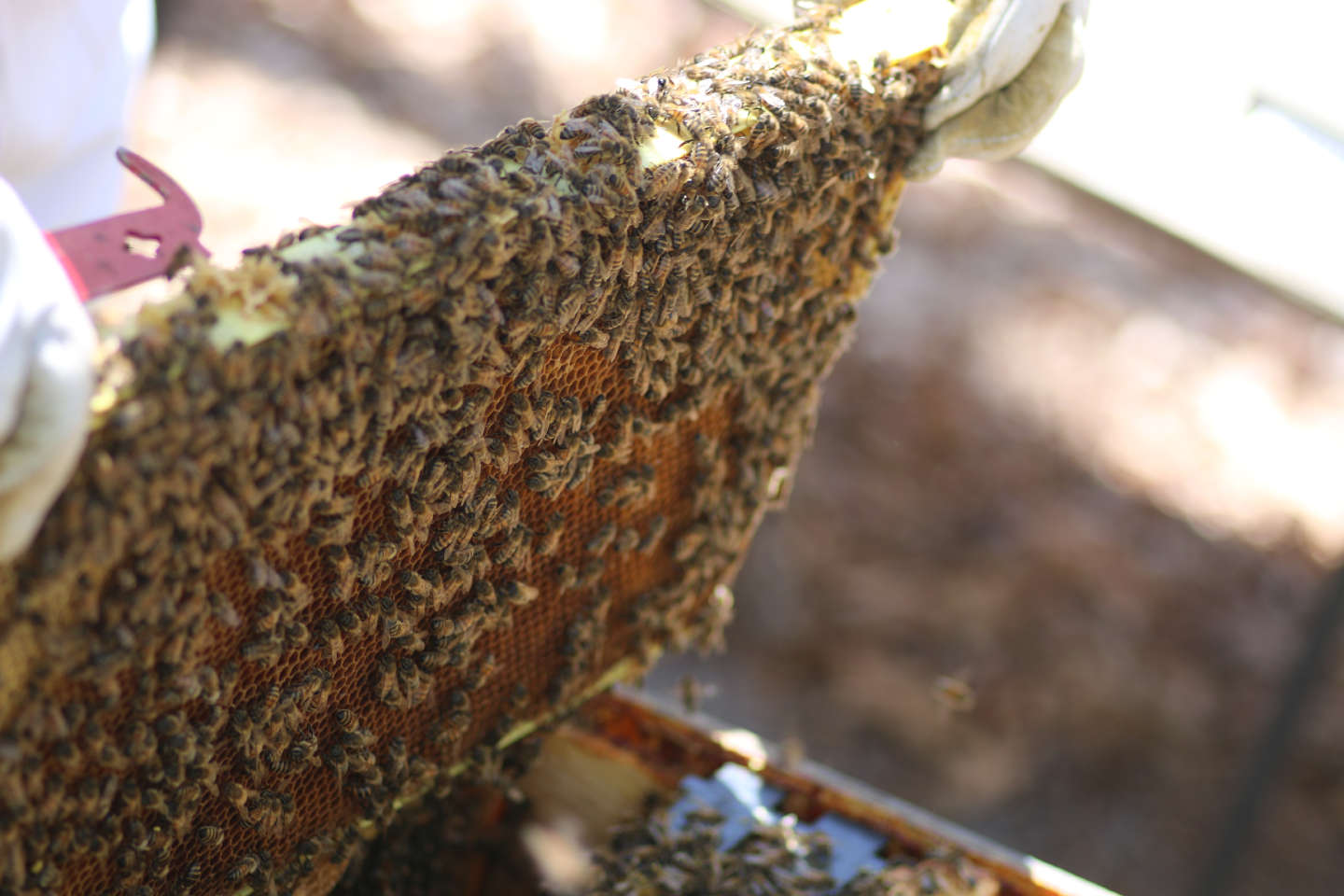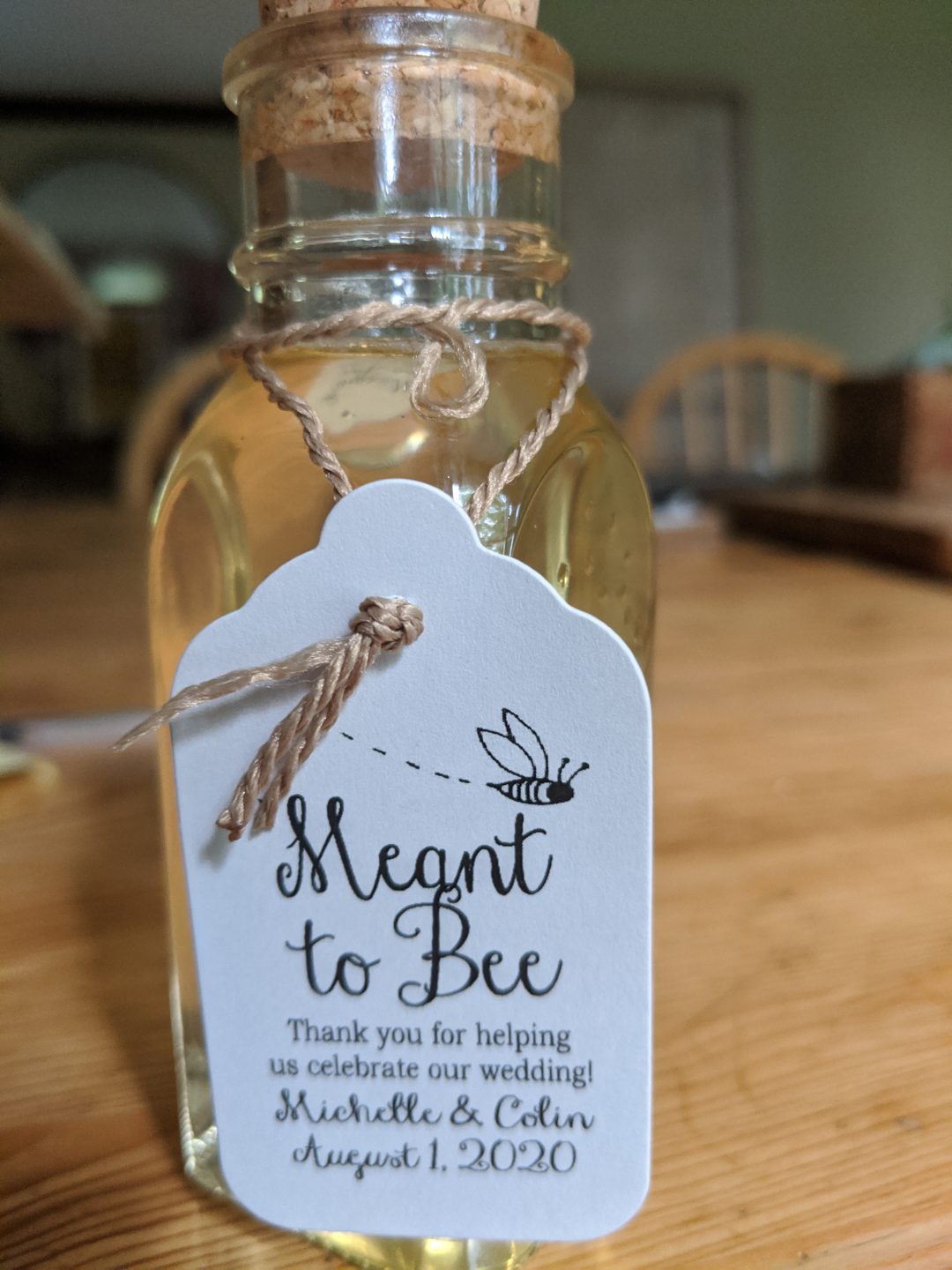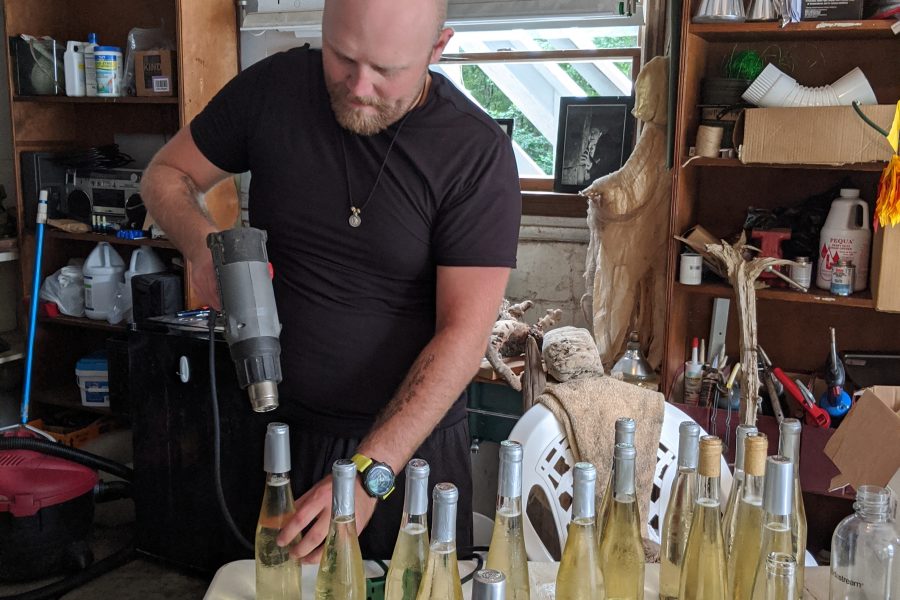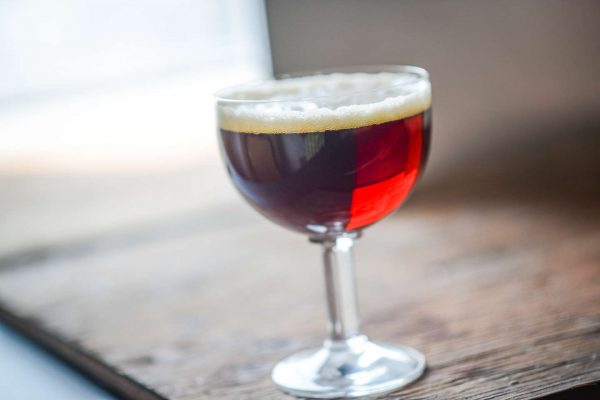
By Kathy and Andrew Luberto
Many people have heard the origin of the term “honeymoon” being connected to mead. Although the historical accuracy is questionable, the story was alluring enough to be the impetus for my wife and me to create a mead to serve at our son’s wedding.
Kathy being a beekeeper and me a home meadmaker, we decided to put our hobbies together as a family gift to the newly wedded couple and guests at the wedding.
Beekeeping & Honey
Making a mead from a home hive requires flexibility. After all, the flavor of the honey is determined by the nectar the bees collect, which for most backyard beekeepers is out of your control. Available nectar varies significantly depending on the available blooms and specific time of year, so you don’t typically start out with a final product in mind as much as craft your mead depending on what you get. A typical honey flow in the Northeast, for example, runs from spring to the beginning of July.

I like to watch what blooms the bees are gathering on and the pollen color they are bringing into the hive. This gives me a sense of possible sources the bees are collecting nectar from. Pollen is used as a protein source to feed their brood (bee babies), while nectar is used as an energy source and to create honey. The bees collect nectar by sucking it up thru a straw-like tongue called the proboscis and storing it in a separate stomach called a nectar sac. Once filled, they return to the hive and begin to pass the nectar from bee to bee through regurgitation (yes, you read that right). As it’s passed from bee to bee, the nectar loses moisture content until it’s approximately 20% water. The reduced moisture nectar is then placed in a cell and fanned by the bees using their wings to reduce the moisture content below 18%. At this point, it’s now honey! At this point, it’s capped with beeswax the bees secrete from under their abdomen and is ready for various uses in the hive. This low moisture content and natural anti-bacterial properties of honey keep it preserved for extraordinarily long periods of time.
When the nectar flow ends, beekeepers harvest surplus honey from their hives and prepare to help their colonies survive the winter. A critical decision to make is when and how much honey to take. I know beekeepers who only remove a couple of capped honey frames at a time, spin it, and then return the drawn combs (empty honeycomb) back to the bees. Others like to wait and harvest all at once. The honey used for this mead was harvested all at once in the middle of July, which is considered a spring season honey. Spring honey is generally lighter in color and more delicate in flavor than Fall honey in our area.
Dialing in a Mead Recipe
Tasting our honey has been a surprising adventure for us throughout Kathy’s beekeeping. The contrast from year to year, even as the hives remain in the same area and flora and fauna remain relatively unchanged, is striking. The Spring honey we harvested for the wedding mead had primary flavors of cotton candy and vanilla with secondary notes of lemon and candied orange zest built into the finish and into the aftertaste. The bouquet was wonderfully expressive and flavor delicate yet still complex when you paid attention to flavor nuances. Kathy and I tend to bounce adjectives off each other when we first taste our honey, trying to refine and focus on what exactly we’re perceiving. This is an essential step in the meadmaking process and factors into my recipe considerations when trying to envision what the final product will be like.

Kathy and I were enamored with the flavor of the honey we harvested from her hives, so I wanted to create a mead that would first and foremost showcase the honey. I decided against a melomel or the use of fruit as I felt that would overshadow the honey flavor. I also knew I wanted something on the sweet side and decided to make the mead at the upper end of standard strength (14% ABV) to gain balance and complexity from the various alcohols. While a traditional-style mead would have been excellent for this honey, I decided to add black peppercorns for some spicy counterbalance to the sweetness and added complexity. I tend to be a fan of Zinfandel wines, and one of my favorite commercial meads is “Murder of Crows” by Melovino Meadery, a wonderful blackberry and black pepper mead. Lastly, I chose to use Lavlin RC 212 to accentuate the mead’s pepper character and provide the target ABV I was shooting for.
I chose 66F for the fermentation temperature. However, I know some excellent mead makers who like to push the fermentation temperature of this yeast strain much higher. After crashing, stabilizing, adding the pepper, and then clarifying, I felt the finish on the mead was still a bit flabby even with the alcohol, pepper, and phenols, so I adjusted with tartaric acid which brought everything into balance and really made the honey character pop. One of the things I love most about mead is the ability to adjust the flavor in various ways, including adding acid or tannin, backsweetening, or blending. I enjoy the culinary-like aspects of mead making, tasting, and adjusting post-fermentation in real time for an optimal final product.
We bottled the mead in 375 ml clear Renana style bottles and created labels for both the front and back of the bottle with the “internet version” of the origin of the term Honeymoon to play up the wedding significance. Bottles were chilled and then placed on tables throughout the wedding. It was an excellent family connection and a fun activity for Kathy and me in preparation for the wedding. The process of harvesting the honey and making the mead, tasting and adjusting, and designing the final packaging together to serve to family and friends at a child’s wedding is an experience not soon forgotten.
About the Authors
Kathy has been keeping bees for several years, is currently pursuing Cornell University’s Master Beekeeper certification, and has been a science educator for over twenty years. Andrew sits on the Homegoverning Committee of the American Mead Makers Association, is a BJCP Grandmaster II w/mead certification, and is an Advanced Cicerone.





Share Post